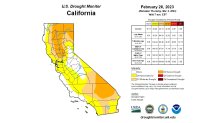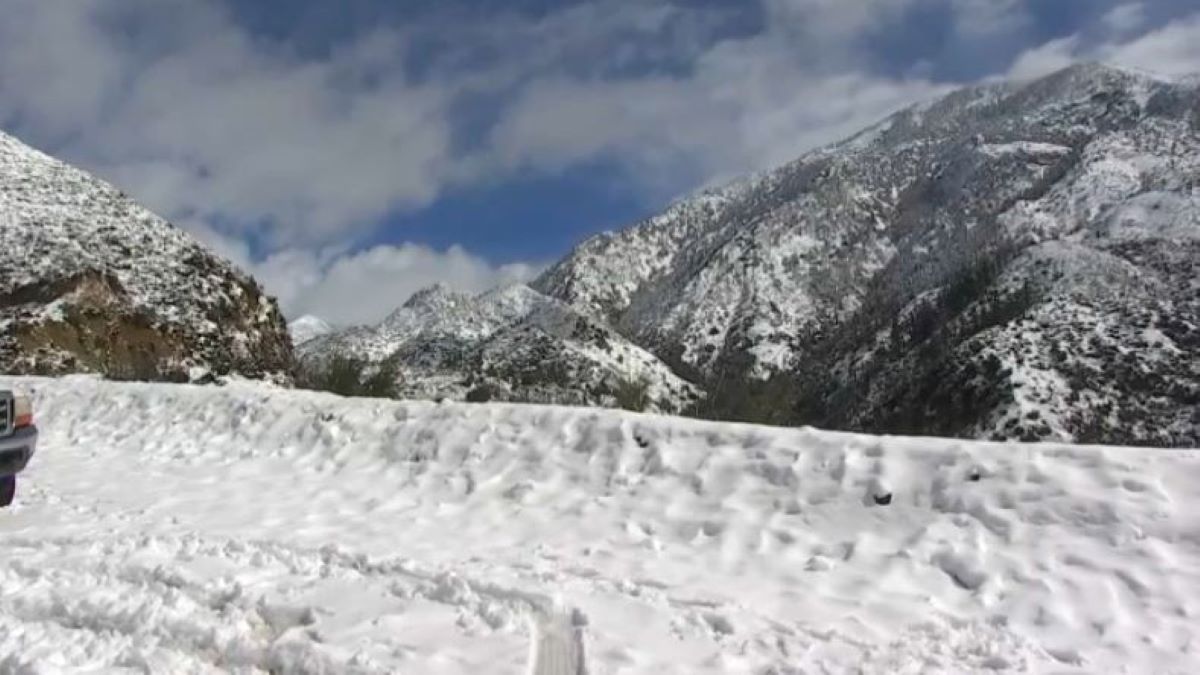More than half of California is drought-free after what was anything but a dry February.
After unrelenting storms brought rain and snow last month, only 49 percent of the state remains in the moderate drought category, according to this week's U.S. Drought Monitor report. That figure stood at 99 percent in October at the start of California's water year.
"January was a very wet month for us, and February is going down in the record books," said NBC4 forecaster Belen De Leon. "When we started the water year, we had exceptional, extreme drought conditions all across the state.
Get top local stories in Southern California delivered to you every morning. Sign up for NBC LA's News Headlines newsletter.
"Today, things are looking much better. This is a result of all the rain, all the snow."
Moderate drought is the least severe of four categories in the weekly report. The most severe drought categories were wiped off the map earlier this winter.
About 25 percent of the state remains in severe drought, a significant improvement from the start of the water year when 94 percent of California was in that category.
Drought conditions were eliminated this week along portions of the California coast, including Ventura and Santa Barbara counties, and part of Los Angeles County.
"When we look at the rain surplus, not only are we on pace, we're ahead of pace when it comes to our seasonal average," said De Leon.
The central Sierra Nevada Mountains and foothills also are out of the drought categories for the first time since January 2020.
“The rain has improved California soil moisture and streamflow levels, while the snow has increased mountain snowpack to much above-normal levels,” according to the Monitor. “Most California reservoirs have refilled with water levels near or above average, but groundwater levels remain low and may take months to recover.”
The U.S. Drought Monitor is a joint project of the National Drought Mitigation Center at the University of Nebraska-Lincoln, the National Oceanic and Atmospheric Administration and the U.S. Department of Agriculture. The Drought Monitor report released Thursday includes information available up to Feb. 28.
California has spent most of the last 15 years in drought. The current dry spell included one of the driest late winters on record.
The state's normal wet season runs from late fall to the end of winter, but dismal precipitation left about 95 percent of California in severe drought at the start of spring. By September, nearly all of California was in drought.
Much of California’s water comes from melting snow in the Sierra Nevada Mountains. In an ideal scenario, storms blanket the mountains with snow during winter, building up the natural reservoir. That snow then melts in late spring and early summer, replenishing the state's water system. Snowpack was far below normal in Spring 2022.
California's statewide snowpack level was more than 200 percent above normal in mid-December after powerful December storms blanketed the Sierra Nevada Mountains with snow. That total has improved after February storms brought several more feet of snow.
The water content of the Sierra snowpack, which provides about a third of California's water, is more than 160% of the historical average on April 1, when it is normally at its peak, according to the state Department of Water Resources.




